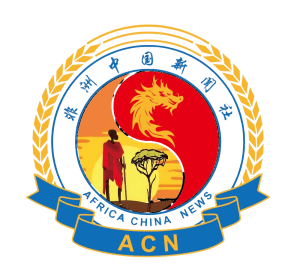Subscription required
In recent years, Chinese overseas lending has garnered attention, both for its role in financing infrastructure projects in developing countries and for the growing concerns surrounding sovereign debt. While the financing has traditionally been dominated by Chinese policy banks like the Export-Import Bank of China (Exim Bank) and the China Development Bank (CDB), there has been a significant shift in recent years. Chinese commercial creditors have begun playing a larger role in providing loans to African countries, marking a clear departure from the long-standing dominance of policy banks. This shift brings new opportunities, but also presents challenges, especially for African nations already struggling with high debt burdens.
A new working paper by Tianyi Wu and Yunnan Chen, published by the Overseas Development Institute (ODI), delves into this trend of creditor diversification, focusing on how commercial creditors have increasingly become involved in financing Africa’s infrastructure. Their research highlights the growing influence of these creditors and the differences between them and the traditional policy banks, shedding light on the potential impacts of this shift for both the financing of infrastructure projects and debt management across the continent.
The Rise of Chinese Commercial Creditors
Historically, China’s policy banks, particularly Exim Bank and CDB, have been the primary lenders for large-scale infrastructure projects in Africa. These banks are state-owned institutions that have provided loans under favorable terms to developing countries, often as part of broader economic and geopolitical strategies. However, in recent years, there has been a noticeable shift, with Chinese commercial creditors playing an increasingly significant role in Africa’s infrastructure financing.
Wu and Chen’s research points out that while these commercial creditors are also state-owned, they differ substantially from policy banks in their approach to lending. Commercial creditors are more inclined to take on riskier projects and are often less willing to offer favorable financial terms to borrowers. This means that African nations seeking loans from Chinese commercial banks may face higher interest rates and stricter repayment conditions compared to those obtaining funds from policy banks.
This shift in financing sources is crucial, as it introduces new challenges for African governments that must now navigate a more complex landscape of loan conditions and financial terms. While Chinese commercial creditors bring additional funding into the region, their less favorable terms could exacerbate the already pressing debt challenges faced by many African countries.
Exploring the Impacts of Creditor Diversification
The impact of this diversification of creditors is multifaceted, and Wu and Chen’s analysis helps unpack some of the key implications for African nations. One significant concern is that the increased role of commercial creditors could lead to higher levels of debt and more difficult terms of repayment. Policy banks have traditionally been more flexible in terms of interest rates and repayment periods, often offering loans with lower interest rates and longer tenures. In contrast, commercial creditors are more likely to impose stricter conditions, including shorter repayment periods and higher interest rates, which could further strain the finances of African governments.
Another important point raised in the study is the risk appetite of commercial creditors. While policy banks are often willing to lend for large-scale infrastructure projects that may take many years to generate returns, commercial creditors tend to be more cautious. They prefer projects that offer quicker returns and may be less inclined to finance long-term investments with uncertain outcomes. This difference in approach can have serious implications for the types of infrastructure projects that African governments can pursue and how they will be financed in the future.
The study also highlights how the diversification of creditors could affect the broader debt management strategies of African governments. With the rise of commercial creditors, governments may find it more challenging to renegotiate debt or restructure loans. This is particularly concerning for countries that are already facing rising debt levels and may struggle to meet the more demanding terms set by commercial creditors.
Case Studies: Zambia and Ghana
To better understand the effects of creditor diversification, Wu and Chen focus on two African nations: Zambia and Ghana. Both countries have been heavily involved in Chinese infrastructure projects, and their experiences provide valuable insights into the challenges of managing debt from different types of creditors.
In Zambia, for instance, Chinese commercial creditors have been involved in financing a range of infrastructure projects, including road construction and energy projects. However, the country has faced difficulties in managing the debt associated with these projects. While Chinese policy banks were previously more willing to offer favorable terms, the rise of commercial creditors has led to an increase in debt burdens. Zambia has struggled with these more demanding terms, especially as the country has also faced economic challenges, including fluctuating copper prices and a growing fiscal deficit.
Ghana, similarly, has seen a rise in the involvement of Chinese commercial creditors in financing its infrastructure. The country has borrowed heavily for road construction, energy projects, and other infrastructure needs. However, like Zambia, Ghana has encountered difficulties in managing the terms set by commercial creditors. The higher interest rates and shorter repayment periods imposed by these creditors have created additional pressure on the country’s fiscal position.
Both case studies illustrate the complex dynamics of creditor diversification and the difficulties that African governments face in managing infrastructure financing from a variety of sources. While Chinese commercial creditors have provided much-needed funding, their involvement has also brought additional challenges, particularly in terms of repayment and debt management.
The Need for Strategic Approaches
The findings from Wu and Chen’s research underscore the need for African governments to adopt more strategic and prudent approaches to borrowing from Chinese commercial creditors. Given the challenges posed by higher interest rates, stricter loan terms, and increased debt burdens, it is essential for African countries to carefully assess their borrowing options and prioritize projects that offer clear economic returns.
One key recommendation from the authors is the need for African governments to focus on the commercialization of infrastructure projects. By ensuring that projects are financially viable and capable of generating returns, governments can reduce the risk of default and improve their ability to service debt. Additionally, governments should work with capable and reliable partners who can help manage projects efficiently and minimize risks.
Another important point is the need for African governments to better manage their relationships with creditors. This includes being transparent about debt levels and ensuring that the terms of loans are well-understood and aligned with the country’s long-term development goals. Governments should also seek to diversify their sources of financing, exploring alternatives to Chinese commercial loans, such as private sector investment or multilateral development banks, in order to reduce their reliance on any single creditor.
The growing involvement of Chinese commercial creditors in financing infrastructure in Africa brings both opportunities and challenges. On one hand, these creditors provide much-needed funding for infrastructure projects that can contribute to economic development. On the other hand, their less favorable loan terms and higher risk appetite may exacerbate existing debt problems for African countries.
To navigate these challenges, African governments must adopt more strategic approaches to infrastructure financing, carefully selecting projects that offer strong economic returns and managing their debt portfolios with greater caution. By doing so, they can better leverage the opportunities offered by Chinese commercial creditors while minimizing the risks associated with rising debt levels.




